
Tesla Investor Day: Next-Gen Vehicle Insights Revealed [VIDEO]
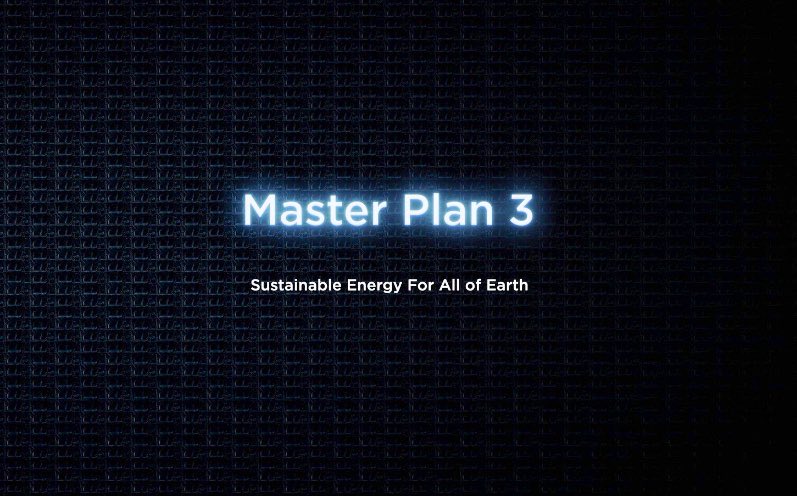
Tesla CEO Elon Musk kicked off the company’s Master Plan 3 by detailing what it will take to convert Earth to sustainable energy generation and use.
The plan will result in repowering the existing grid with renewables, switching to electric vehicles, switching over to heat pumps for homes, businesses and industry, plus electrifying high temperature heat delivery and hydrogen.
“At some point, we may make a heat pump for the home, maybe,” said Musk.
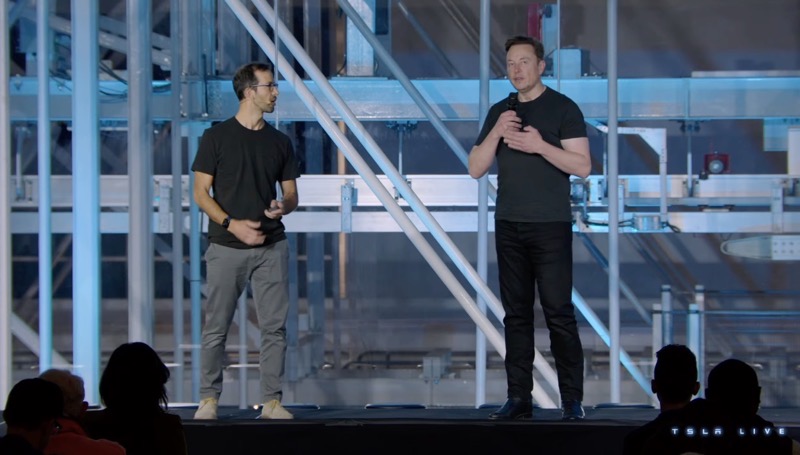
Essentially, Musk said today’s Master Plan 3 is a message of “hope and optimism” that is entirely feasible.
Next, we saw Tesla lead designer Franz von Holzhausen and VP of Vehicle Engineering Lars Moravy talk about the company’s vehicle design and manufacturing.
One slide detailed the ‘switch to electric vehicles’ as part of Tesla’s master plan for a sustainable energy future. We see here two vehicles under wraps. One looks like a taller van or SUV of some sort, while the other is a smaller compact car it seems.
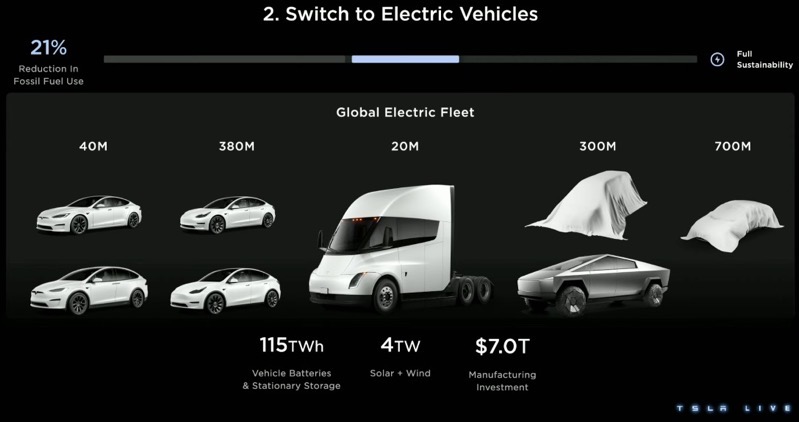
“We have to rethink manufacturing again,” said Moravy, illustrating a new manufacturing process for its next-gen vehicle, but using a Model Y for demo purposes. Tesla will build all sections separately and simultaneously, then put the car together, instead of a traditional assembly line.
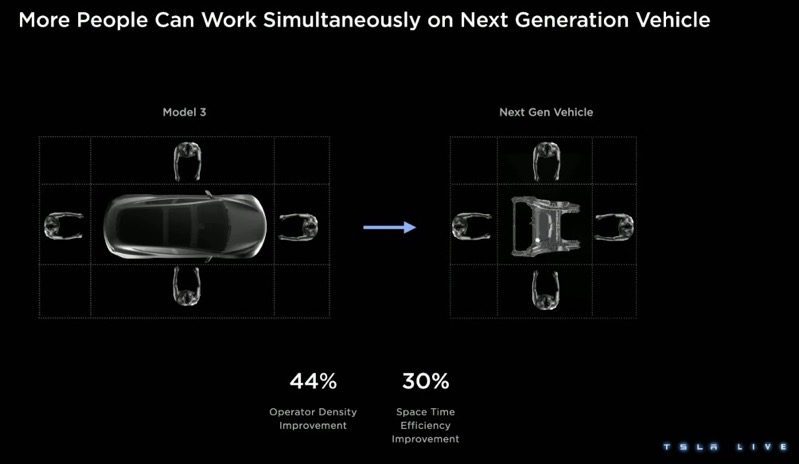
Tesla says its next-gen vehicle manufacturing efficiencies will see a 50% reduction in cost and nearly 40% reduction in manufacturing footprint.

Colin Campbell leads Tesla powertrain engineering and detailed the efficiency of Tesla’s Model 3 drivetrain over the years. Explained all of this was done without compromise.
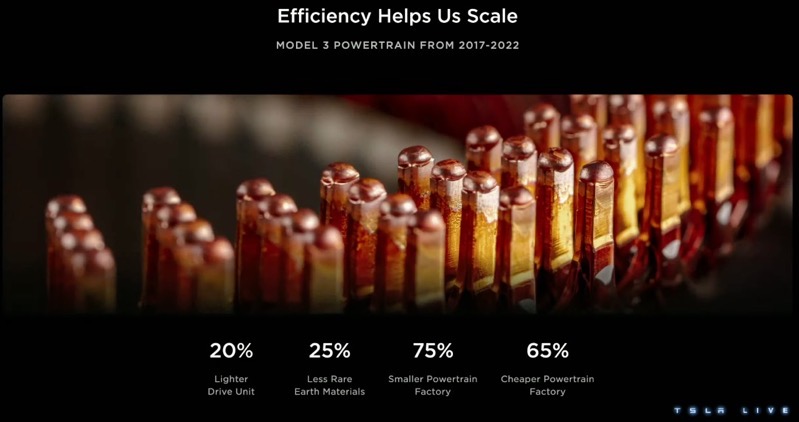
“How did we do that? We did it by designing the entire vehicle and factory together as one company. This sets Tesla apart. All engineering teams together in one room to make a decision,” said Campbell.
Tesla has made its own custom processors that can replace multiple processors.
As for Tesla’s next drive unit, the company says it will be “even more scalable”.
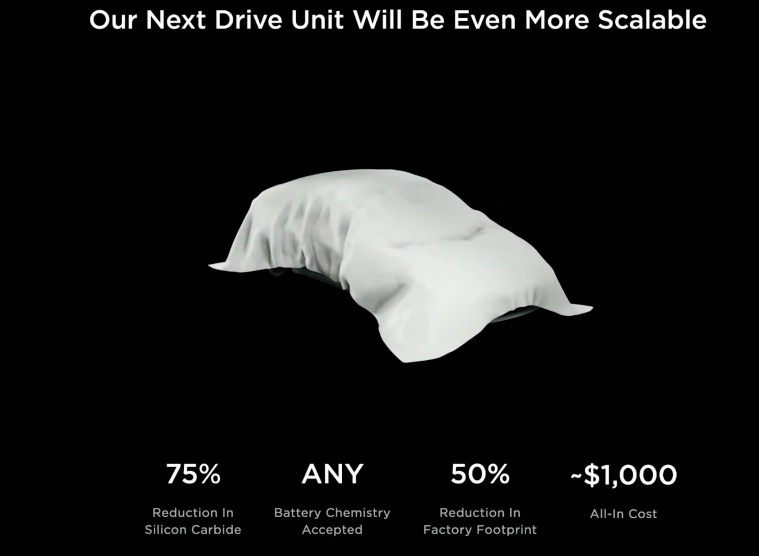
It will have a 75% reduction in silicon carbide, will work with any battery chemistry, plus result in a 50% reduction in factory footprint, while having an all-in cost of about $1,000. Tesla says no other automaker is close to that number.
The next-generation permanent magnet motor will not have any rare Earth materials at all. This will allow Tesla to scale faster without spending time and money on rare Earth materials.
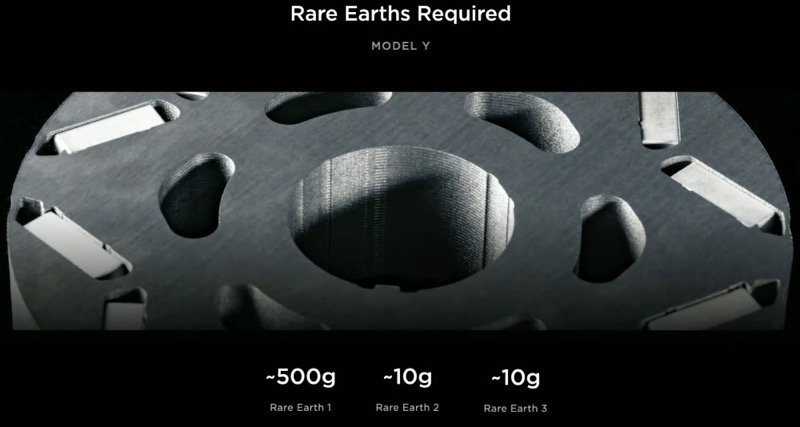
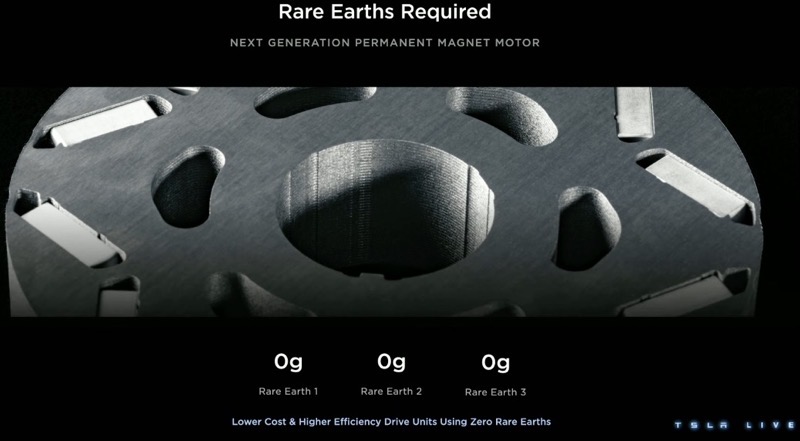
Tesla also detailed its improved low voltage architecture, reducing 17 kilograms of cables from the Model S to Model 3.
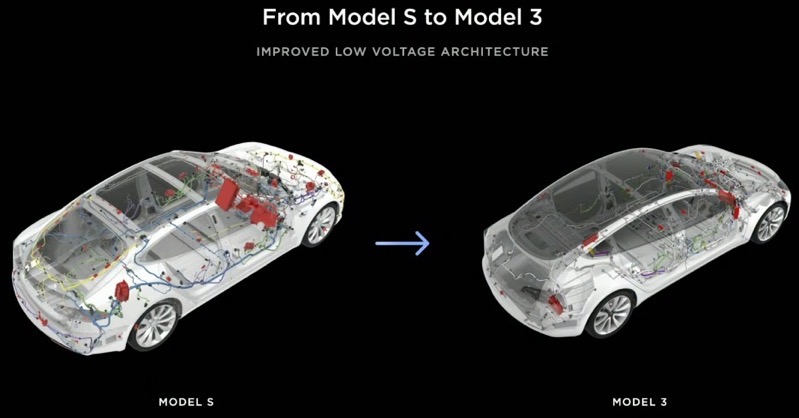
Eventually, Tesla will have 100% of its own designed controllers for its next gen vehicle. The Cybertruck has 85% of its design from company-designed controllers. This is further vertical integration of Tesla’s supply chain.
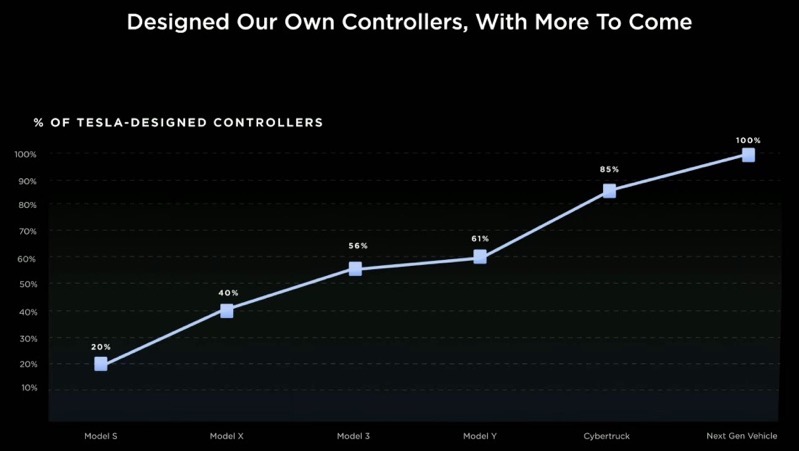
Tesla also talked about its switch from traditional fuse and relays to electronic fuses, which are faster, have no moving parts, are granular and can have firmware changed.
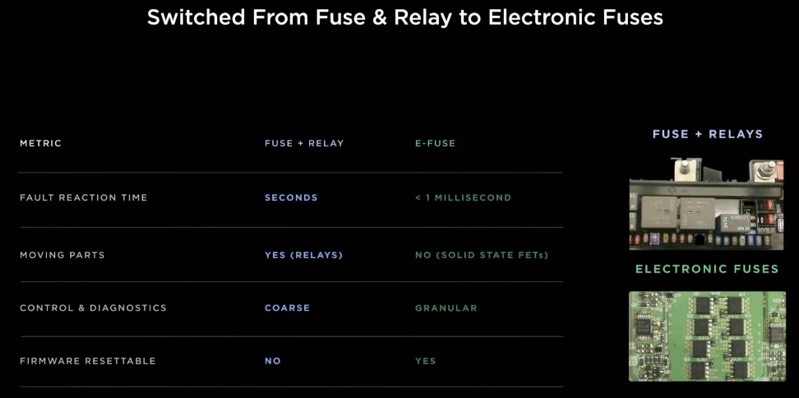
Tesla also detailed its reduced costs of the Model 3/Y center display over the years, improving costs, weight and power.

The future of low voltage architecture for Cybertruck, Optimus and future vehicles? It’s 48V. This reduces the current needed by a factor of four, resulting in smaller wires, electronic fuses, controllers and more.
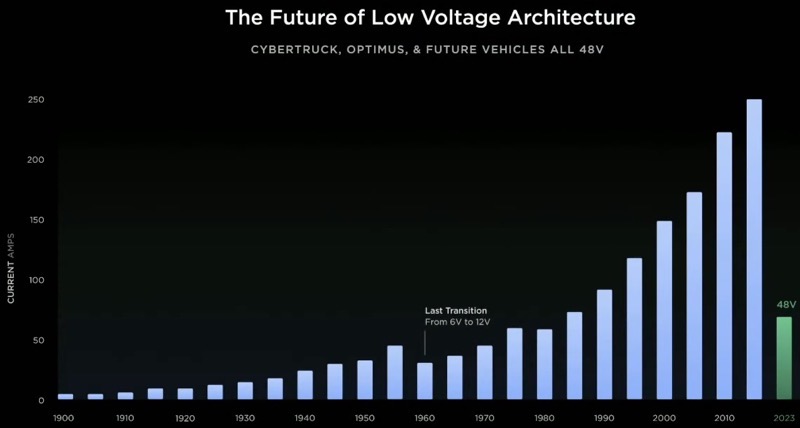
Cybertruck will have a single connection for debugging with its low voltage architecture:
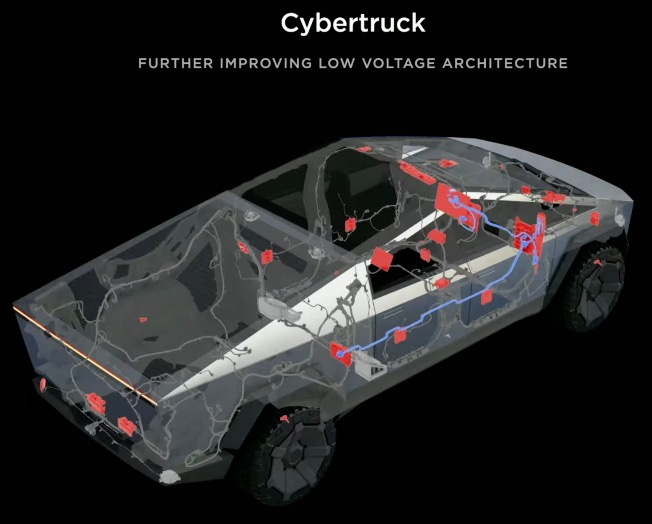
The next-gen Tesla vehicle will have a simpler and cheaper electronic architecture with 100% of its controllers designed in-house:

Tesla then detailed how its software updates allow it to iterate at fast speeds, revealing its vehicle fleet drives 123 million miles per day and there are 1.9 million charge sessions per day.
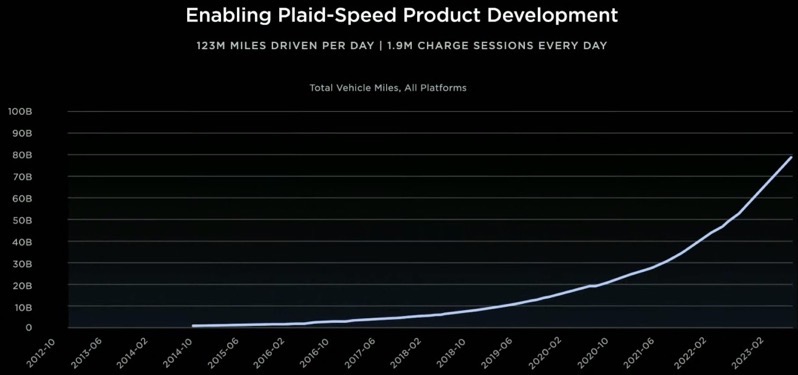
Tesla also noted its vehicle software is now integral on its assembly line, notifying when something is wrong as it happens, allowing for an immediate fix before the car is fully assembled.

…developing, more to follow

